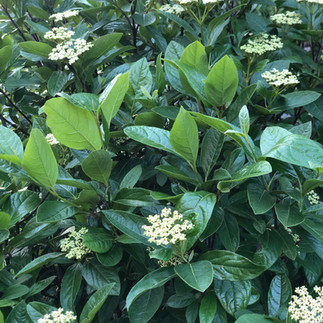A Dreamy Drainage Swale: Gardening for the Chesapeake
- Nuts for Natives
- Jun 5, 2024
- 2 min read
Absorbing water while looking awesome.

There was a time when drainage swale and dreamy just did not fit together. Those days are gone. Our collective attention on the need to reduce stormwater runoff, aka trying to keep more rainfall in our gardens and landscapes instead of rushing into streams and rivers, has spawned a new generation of gardens. I am not sure any could be dreamier than the garden along side a large gothic building at the National Cathedral in Washington D.C.
This is a bio-retention area meaning it is designed to slow down and retain water to allow sediment and other contaminants to settle out. Bio-retention areas typically are created with very specific kinds of soils and some type of filter which could be anything from sand to gravel. They are also typically planted with plants that easily withstand both inundation and drought which makes them interesting gardens to learn from.
Pause for Paw Paws

In this garden, paw paws (Asimina Triloba) are the architectural statements of the design - so rare and refreshing. Strategically placing paw paws along a path and elsewhere in the garden encourages your eye to travel through the garden. Seeing these trees featured like this shows off their structure and aesthetic value. Most paw paws I see are out in our parks growing wild as understory trees and in the dense shade, they can be straggly. These in full sun are robust.
Penstemons

In May and June, clusters of a cultivar of perennial penstemons (Penstemon digitalis) in bloom are woven throughout the garden, creating a winding river of their own. These cultivars have reddish stems and foliage and slightly pink blooms. If you are looking to create a similar effect, you might try Penstemon 'Husker Red' (Penstemon digitalis 'Husker Red') which is commonly available. The garden has several straight species penstemons dotted throughout as well. Penstemons are one of those flowers that fill the bloom gap between late spring and early summer too.
Purple, Reds and Maroons
A sea of green dotted with purples and maroons of penstemon and cultivars of ninebark shrubs similar to Coppertina Atlantic ninebark (Physocarpus opulifolius 'mindia') and pops of red from Indian pinks (Spigelia marilandica) and purple from blue flag iris (Iris versicolor) really feels vibrant. The few pops of color from the cultivars makes all the difference. Red and purple is a daring color combo and really works in this garden. To show how carefully this garden is designed, the paw paws have maroon blooms as well - not a coincidence!
Native Shrubs
This garden is filled with native shrubs: bayberry (Morella pensylvanica), buttonbush (Cephalanthus occidentalis), inkberry (Ilex glabra), sweetspire (Itea virginica), and possumhaw viburnum (Viburnum nudum). Some of the shrubs like the bayberry are interspersed through the garden. Others are placed in wavy lines.
With over 60 species of natives, this garden is designed to have blooms through the growing season. You can find it along the Woodley Road side of the Virginia Mae Center in the heart of the National Cathedral grounds. While most of us don't need to create a garden with appropriate scale for a four story gothic structure, there are many takeaways for us home gardeners here!
Happy Gardening.



























The Best Escort Service in Delhi Agency understands how to take care of their clients. The model I encountered was professional and desirable, and my experience with her was simply delightful.
Wow. First-time reader of the blog, and I just have to say, thank you! This is amazing info.
My first couple of years of interest in native-plant gardening (spurred by running across the writings of Doug Tallamy, naturally) have coincided with a need to install a couple of rain gardens at the corners of my suburban back yard. Finding all of this information on native plants for drainage areas is a gold mine. I've already got some of these bluestars and penstemmons; I'm looking forward to next year when I can add those stunning Indian pinks to my Virginia irises, swamp milkweeds, swamp mallows (hibiscus), New York asters and ironweed, and monkey flowers!